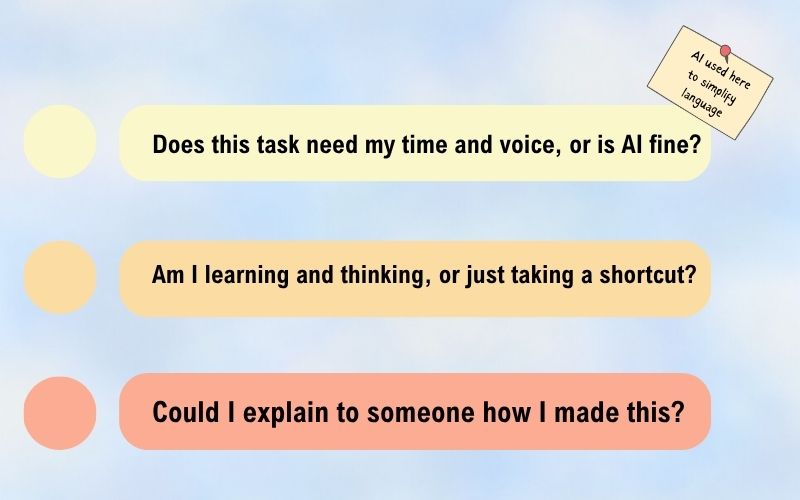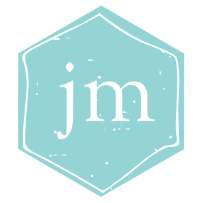I’m feel like I’m in a perpetual conversation with an annoying friend who’s always offering unsolicited advice. Every time I open a new document or type something into a search engine, there they are, saying, ‘Have you thought about this? I can help, you know.”

Maybe I don’t want your help! Maybe I can do it myself! (Inner toddler here…)
I’m talking about AI, of course. Not how to prompt it or make it do your work, but when and why it belongs in what you do. I use AI for maps, images, and planning, but I’m always thinking about how to keep my professional integrity intact. I’m in a constant debate with myself about the ethics of doing so, but it doesn’t stop me. Because AI makes life so much easier, doesn’t it!
While I’ve been wanting to write on this topic for some time, I’ve never known exactly what I wanted to say. So I’m thinking onto the page, not about the ‘how to’ stuff – plenty of people are doing that with much more authority than me – but about when and why. What underlying principles do I use when engaging with AI? How might I write about these? How can I be both strategic and ethical in my use of AI?
Principle 1: Don’t Outsource Your Core Business (Keep your essential skills in your hands.)
Every professional has a core business – the thing that you’re good at, you’re paid for, that only you can do. Similarly, if you’re a student, in every subject you take, you’re learning core skills that you need to demonstrate control over to pass.
If you’re a writer, you need to be able to shape words into your chosen text types for your chosen audience. If you’re a student of English, you need to show you’ve learnt how to do that.
If you’re a doctor, you need to diagnose and care for your patients. Medical students need to move beyond a knowledge of (say) anatomy into a critical understanding of how to apply that knowledge to real human beings.
If the writer uses an app to make a novel, or the doctor relies on AI to make the diagnosis, they’re giving away the essence of their work. They’re cheating. And the student who submits an AI generated essay is cheating the system in the short term, but more importantly, their future selves.

Principle 2: Do Use AI for Scaffolding (AI supports, but doesn’t replace, your work.)
It may not sound like it so far, but I’m all in favour of using AI. I love using it to help me brainstorm, plan, proofread and format. I even use it to write, when it’s not me as a writer I’m selling. For example, I routinely ask AI to help me be more polite in emails, because I know I cut to the chase too quickly. AI is a tool – pretty much an elevated pencil. After all, you wouldn’t look twice at a carpenter using a power tool or a cook using a food processor. For both, the tools make life simpler without getting in the way of their core business.
The trick is to recognise what’s okay in the context of your business – and to accept the subjectivity of that judgement (and that others might disagree!). For example, I’ve been experimenting with AI intervention in these blogs, up to and including one where I deliberately published something that was way over my own line in terms of AI intervention. (See if you can work out which one!) I wanted to see what it felt like to look back at that blog – and it feels bad. Like I cheated. So I won’t be doing that again.
I’ve arrived at a point where I ask AI for suggestions for some of my writing and then retain control of which I accept and how I adopt them. I wouldn’t do that if I was writing a poem – I feel like in that context, any artificially generated help would feel false.
Principle 3: Stay in the Driver’s Seat (Always analyse, evaluate, and judge AI suggestions — the final decision should be yours.)
Which brings me to my next point: AI can make suggestions—but you must do the steering. It’s important that you keep on analysing, evaluating, judging – doing the necessary critical thinking, instead of blindly accepting AI words as gospel.
You might ask yourself: “Do I understand this? Do I agree with it? Could I defend this position if someone asks? If the answer is yes, then maybe put your name on it. If you can’t explain or defend it, it’s not yours.

Principle 4: Integrity Beats Shortcuts (Avoid the temptation to cut corners; real growth and credibility come from doing the work yourself.)
I mean, I get it. It’s just so tempting to take that shortcut, to get AI to instantly produce what would take you forever. Part of the problem is that it’s such a new temptation. Unlike, say, murder or adultery, it feels like the moral handbook is still being written.

It’s not, of course. Cheating isn’t new, and neither is laziness. It’s only the mechanism that’s updated. Passing something off as yours when it isn’t probably goes back to some Palaeolithic bloke claiming his sister’s cave art. I expect he felt great – until she refused to feed him.
The sad truth is that those cliches about effort are cliches for a reason – often repeated because true. ‘Practice makes perfect’. ‘There are no shortcuts in life’. ‘Hard work is one of the keys to success.’ If you wrestle with something by fully engaging with it, you get to call the results your own. You genuinely learn and grow from the experience, and you get better at it.
Cutting corners might feel clever in the short term, but you’re doing yourself and the people you’re dealing with a huge disservice.
Next time you hear the siren call of an AI tool, try asking yourself these questions:
- Is this a task where my time or my voice matter more? Shall I use AI because it’s convenient, or is this a moment where my attention to the task is important?
- Am I using this tool to learn and think, or just to cut corners?
- Would I feel comfortable explaining how I made this to a client, colleague, or teacher?

If you believe some technology experts and science fiction writers (and my brother), AI is going to take over the world. It certainly isn’t going to go away. But neither is all the stuff humans can do – be creative, make judgements, shout with their own unique voices into the void. My challenge to you is a simple one: don’t cheat, do think. Let AI be your power tool. Let it make your life easier, but don’t let it learn, or create, or live for you.

